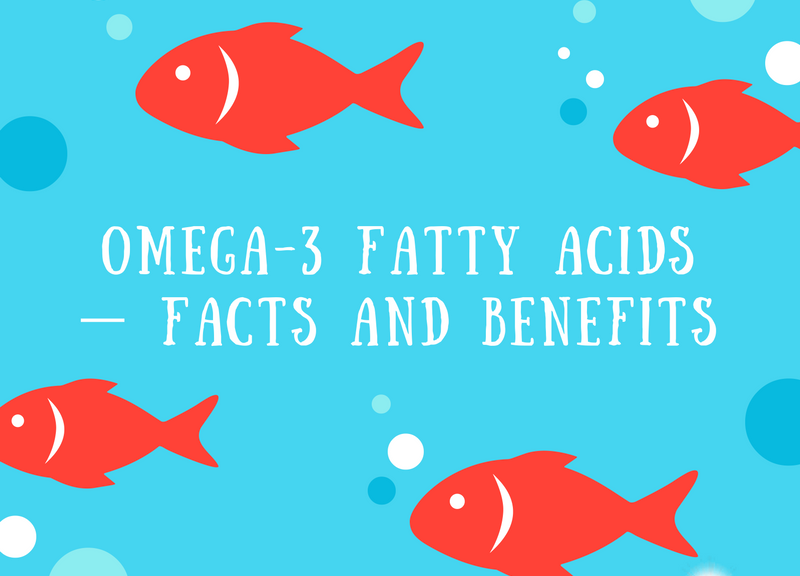
Omega-3 Fatty Acids — Facts and Benefits
Omega-3 Types And Benefits
WHAT IS OMEGA-3
Omega-3 fatty acids are polyunsaturated by a double bond. It is recognized as a “healthy fat” that is good for the body, unlike trans fat and saturated fats. Omega-3 fatty acids are a source of nutrients that have been shown to improve the health and mood of the heart.
The human body can make most types of fat it needs, but that is not the case for omega-3 fatty acids. These are essential fats the body can’t create from scratch – They get them from food.
Common foods rich in omega-3 fatty acids include fish, vegetable oils, fish oil, flaxseed oil, flaxseed seeds, chia seeds, leafy vegetables, and nuts, to name a few.
TYPES OF OMEGA 3
There are three main types of omega-3 fatty acids: (ALA, DHA, and EPA)
ALPHA-LINOLENIC ACID (ALA):
This omega-3 is found in green, flax seeds, leafy vegetables, soy oil, chia seeds, soybean oils, and walnuts. ALA is known as a short chain of omega-3, which means that your body needs to be converted into a longer chain of EPA and DHA to synthesize it. This process is somewhat ineffective, and only one percent of the ALA you consume is replaced by the long-chain version your body needs – this percentage is slightly higher for women.
EICOSAPENTAENOIC ACID (EPA):
EPA is a Twenty-carbon fatty acid located in oily fish – wing oil and algae oil. Your body can synthesize this molecule in its original form. These, together with DHA, are omega-3s that your body needs in large quantities to achieve the benefits it offers.
DOCOSAHEXAENOIC ACID (DHA):
These twenty-two carbon molecules are also found in fatty fish, walnut oil, and seaweed. Your body will convert some DHA molecules into EPA to keep them at the same level if you spend more DHA.
OMEGA-3 BENEFITS
When it comes to the benefits of omega-3, they are rarely nutrients that combine so many positive health outcomes into one compound. The following are some of the advantages of omega-3 fatty acids that are supported by research and studies.
-
LOWERING HIGH TRIGLYCERIDES:
Higher amounts of omega-3 are usually needed for people with high triglycerides, which is the major risk factor for heart disease. Doses of omega-3 supplements are associated with reduced triglyceride levels in patients with or without other diseases.
-
REDUCE METABOLIC SYNDROME SYMPTOMS:
A group of risk factors known as Metabolic syndrome includes high blood sugar, abdominal obesity, high blood pressure, high triglycerides and low HDL cholesterol. These risk factors indicate a high probability of developing heart disease, diabetes or stroke. Many studies have found that the omega-3 supplement improves the symptoms of metabolic syndrome and can help protect you from related diseases.
-
REDUCE INFLAMMATION
One of the reasons why omega-3 fatty acids can be so beneficial to health may be because they help reduce the inflammation of the entire system. Inflammation is at the root of most diseases and is associated with the development of almost all major diseases. So, by consuming an anti-inflammatory diet rich in nutrients, you give your body the best chances to fight the disease.
-
GOOD FOR HEART HEALTH
One of the most popular benefits of omega-3 is how it positively influence the risk factors associated with heart disease. This is one of the reasons why the American Heart Association is very clear about encouraging people to have enough in their diets. Heart disease and stroke are the principal elements of death worldwide, but communities that eat food rich in fish have extremely low cases of these diseases, partly due to their high consumption of omega-3.
-
SUPPORTS CARDIOVASCULAR HEALTH
Fish or omega-3 fatty acids can help people with various cardiovascular problems by improving blood circulation and degrading fibrin, which plays an essential role in clot formation. Also, omega-3 fatty acids have been shown to reduce blood pressure, and it also appears to lower triglyceride levels in the blood and reduce the risk of heart attack.
-
IMPROVES CONDITION IN ADHD
Some experimental studies show that fish oil is used to improve ADHD and other cognitive conditions in children. It helps in developing sharp memory, fast learning, responsiveness and also a behavioral improvement.
-
ASSOCIATED WITH LOWERED CANCER RISKS
With several epidemiological studies in which researchers have observed trends in large population patterns over time, it seems likely that high levels of omega-3 fatty acids may be associated with reduced risk of certain cancers. It appears that people who consume more than long chain omega-3 (DHA and EPA) have reduced risk of colorectal cancer.
-
BENEFICIAL FOR INFANT AND CHILD DEVELOPMENT
It appears that childhood is one of the most important periods in a person’s life to get a lot of omega-3 in their diet, probably due to the number of long chain fatty acids present in the brain and retina. It is essential for babies and children’s development to get the right amount of DHA and EPA to ensure the brain and eyes are adequately developed.
Pregnant women should be particularly aware of this because mothers and children supplemented with omega-3 during pregnancy perform better on mental processing, hand-eye coordination, psychomotor and hearing text for nine months and four years of age. It seems that these children also have a reduced risk of ADHD.
-
SUPPORT HEALTHY SKIN & SLOW AGING
In the same way, omega-3 fatty acids protect your bone density. They can also help your skin stay young and beautiful inside out. DHA and EPA manage the oil production of your skin and naturally slow down aging. Some studies even show that omega-3 is beneficial for the skin by helping prevent acne and related inflammation.
-
MACULAR DEGENERATION
Omega 3 prolongs sustenance in body organs. Research has also shown that people who have a balanced diet of fish oil and fish are less likely to develop macular degeneration.
NOTE:
There are no standard guidelines on the proper amount of omega-3 you should consume every day. However, most organizations agree that at least two servings of 3.5 ounces each week is a good start.



